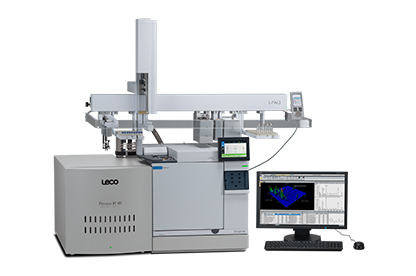 The world of GC-MS applications is constantly expanding, growing into novel applications and improving classical uses. To celebrate the advancements of this powerful technology, LECO and The Analytical Scientist created an eBook that takes a look at some of the emerging uses of GC-MS. From measuring volcanic emissions to predict eruptions to developing the ultimate untargeted technique with GCxGC-MS, these articles explore a variety of topics.
The world of GC-MS applications is constantly expanding, growing into novel applications and improving classical uses. To celebrate the advancements of this powerful technology, LECO and The Analytical Scientist created an eBook that takes a look at some of the emerging uses of GC-MS. From measuring volcanic emissions to predict eruptions to developing the ultimate untargeted technique with GCxGC-MS, these articles explore a variety of topics.
Take, for example, the problem of « fuel washing. » Farm fuels are often government-subsidized due to their necessity in feeding the populace. To prevent these subsidized fuels from being resold to consumers at full price, they are often dyed to highlight their purpose. In 2017, the EU Decision 2017/74 approved “Solvent Yellow 124” (ACCUTRACE™ S10) as the common fiscal marker for gas oils and kerosene. However, common fuel-washing methods can remove the colorant and this marker, making it difficult to trace fuel back to its source and separate subsidized fuels from consumer products. In addition, the chemicals used to launder fuels creates serious environmental pollution as they get dumped as waste.
A new fuel marker, ACCUTRACE Plus, which is colorless, safer, and far more robust than ACCUTRACE S10, was evaluated and confirmed as its replacement, and its marking level has been set at a harmonized range to simplify the implementation across the entire European Union.
Fuel markers need to be detectable to be useful, and in the very congested chromatograms of petroleum products, a single analyte can be overwhelmed. With the GCxGC separation of the Pegasus BT 4D, however, the ACCUTRACE Plus can clearly be identified and quantified in marker dosages as small as 1 percent. The fast acquisition rates (up to 500 spectra/s) acquire sufficient data points allowing for reliable quantitation. With a peak signal-to-noise (S/N) of ~100 at the lowest calibration level tested, the Pegasus BT 4D easily exceeds the required limit of quantitation in this sort of fuel analysis while simultaneously performing a detailed and comprehensive separation for full sample characterization.
Find this article and many more in The Analytical Scientist’s Special Series: GC-MS.







